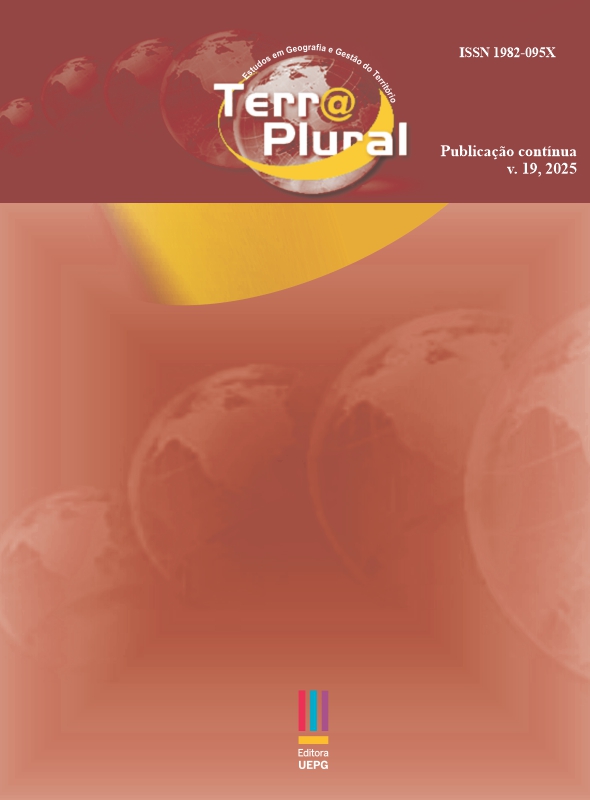Spatialization of the wild synanthropic fauna captured and removed in the urban area of Ponta Grossa, PR, from 2017 to 2022
DOI:
https://doi.org/10.5212/TerraPlural.v.19.23275.002Keywords:
Biogeography, Urban biodiversity, Urban faunaAbstract
Removing vegetation from biomes puts pressure on local ecosystems and brings wildlife and the urban environment closer each other. Many cities seek environmental compatibility by expanding their green areas, however, this can facilitate the displacement of wild fauna, generating conflicts with synanthropic animals that look for refuge and food in urban areas. This study identifies, quantifies, and spatializes synanthropic animals in Ponta Grossa, a medium-sized city in southern Brazil, using data from the Occurrence Records and Statistics System of the 2nd Fire Brigade of Paraná. The data was spatialized using QGis 3.16 software and a density estimation map was made using the Kernel method. A total of 1,371 incidents were recorded, 50.36% related to synanthropic fauna. Snakes are more than a third of the occurrences, followed by wasps and bees. Brazilian porcupines, opossums, and lizards were other numerous representatives. The large number of calls in the central area and nearby neighborhoods (Estrela and Olarias) may be linked to the presence of two large urban parks - Boca da Ronda Park with 2.7 km2 and Margherita Masini Park with 1.3 km2. The results indicate places where fauna move and deserve more attention, supporting environmental sensitization and awareness-raising among the population on the responsible management of synanthropic fauna, while dispelling myths and zoophobias.
Downloads
Downloads
Published
How to Cite
Issue
Section
License
Copyright (c) 2025 Ingrid Aparecida Zambilo, Karin Linete Hornes, Rosemeri Segecin Moro

This work is licensed under a Creative Commons Attribution-NonCommercial-NoDerivatives 4.0 International License.
Revista Terr@ Plural will obtain the auctorial rights for all published texts. This also implies that the text can be published anywhere in the world, including all rights on renewal, expansion, and dissemination of the contribution, as well as other subsidiary rights. The authors get permission to publish the contribution in other media, printed or digital, it may be in Portuguese or translation since the publication is credited to Revista Terr@ Plural. It allows the self-archiving of published articles in institutional repositories, thematic repositories, or personal web pages in the pdf version downloaded from the journal's site.















